Sign up for The Wild
We’ll help you find the best places to hike, bike and run, as well as the perfect silent spots for meditation and yoga.
You may occasionally receive promotional content from the Los Angeles Times.
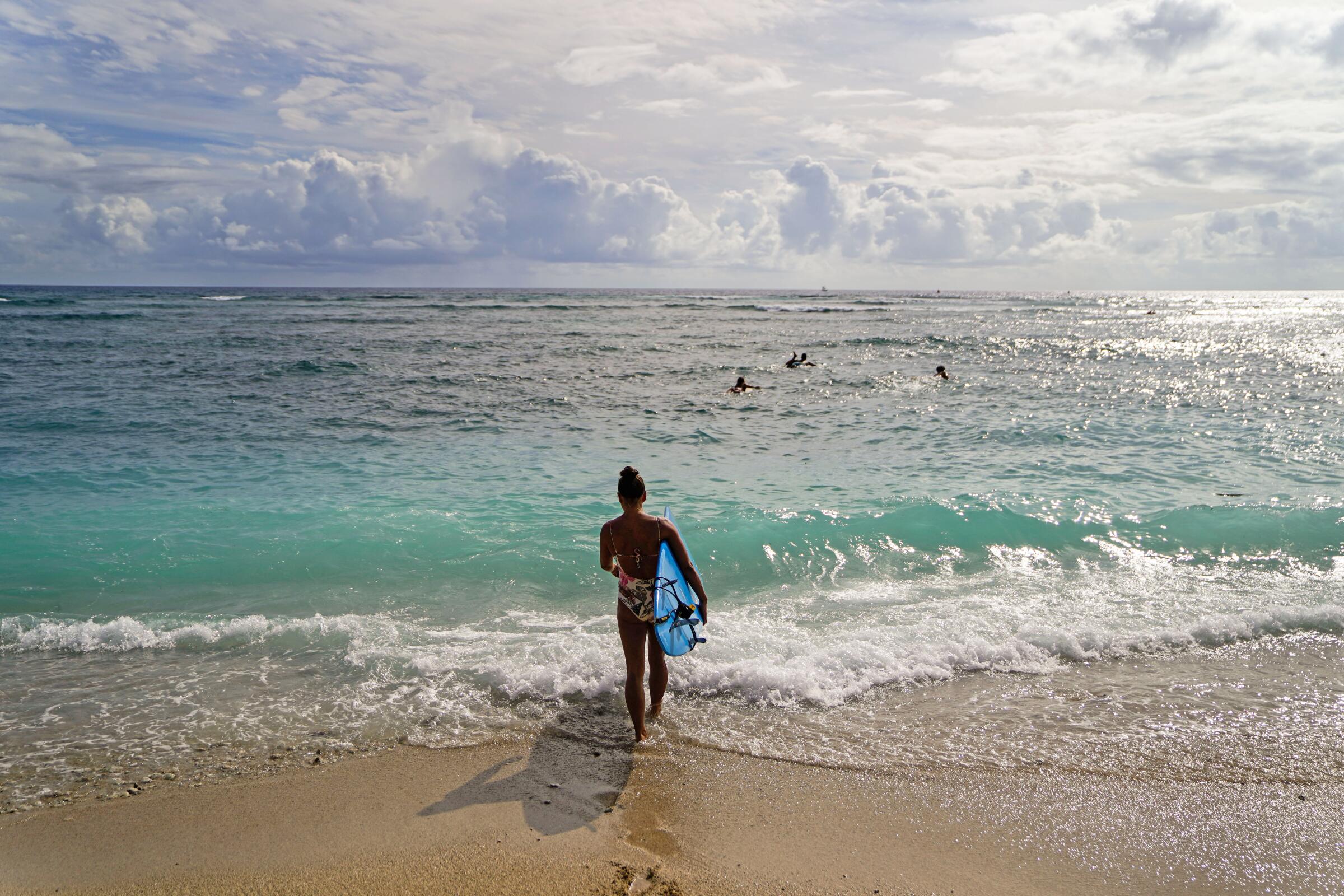
HONOLULU — Cue the ukuleles. Hawaii is reopening for tourism.
But this is a different Hawaii. On these islands, you mask up first, then hang loose.
Since Oct. 15, when state officials eased quarantine restrictions to allow visitors with recent negative COVID-19 test results, new arrivals have found emptier beaches, tidier parks and easier traffic. They have also encountered an island population that pays close attention to pandemic restrictions — perhaps because their state’s economy is at stake, perhaps because of painful history.
So far, Oahu remains a tourist haven turned sideways. With many businesses closed, workers idle and prime destinations underpopulated, local families have had time and space to rediscover their island. They can hike to see the sunrise from Makapuu Point, romp in the waves at Haleiwa on the North Shore and take a beach walk on becalmed Waikiki.
As early visitors capitalize on the same uncrowded access, they’re finding pandemic rules are tighter in Hawaii than in most states. But until November, nobody will know if the surge in visitors has brought a surge in COVID-19 cases.
“Two weeks!” said Oahu resident Jessica Linster, referring to the suspected maximum incubation period of the novel coronavirus. “Two weeks until we know our destiny. It’s scary.”
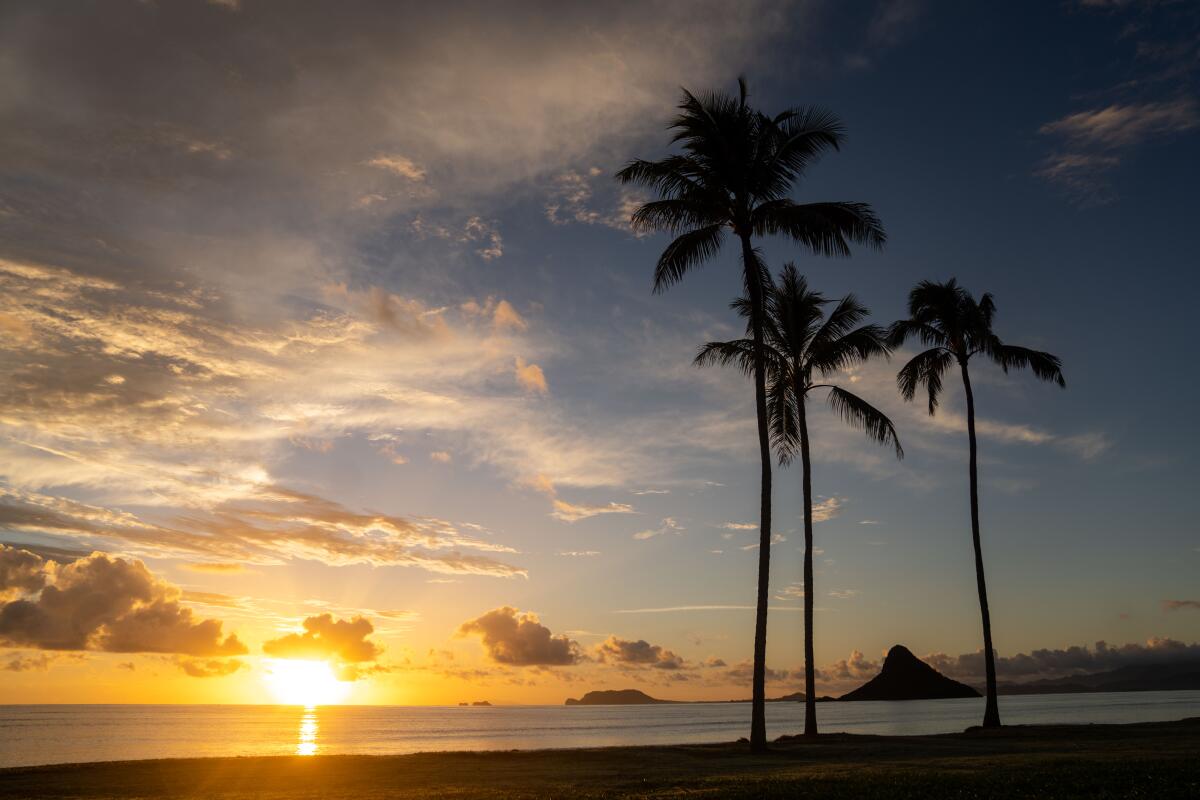
In four days of roaming Oahu in October, Times photographer Kent Nishimura and I found aloha spirit and corona worries as tightly entwined as the roots of a banyan tree.
The deserted halls of the Honolulu airport were a welcome sight Oct. 15, after the startlingly large crowd of travelers in LAX’s Terminal 5, where I boarded a Hawaiian Airlines flight with middle seats empty. (The arrival process, however, now includes an extra step for officials to check your COVID-19 test results.)
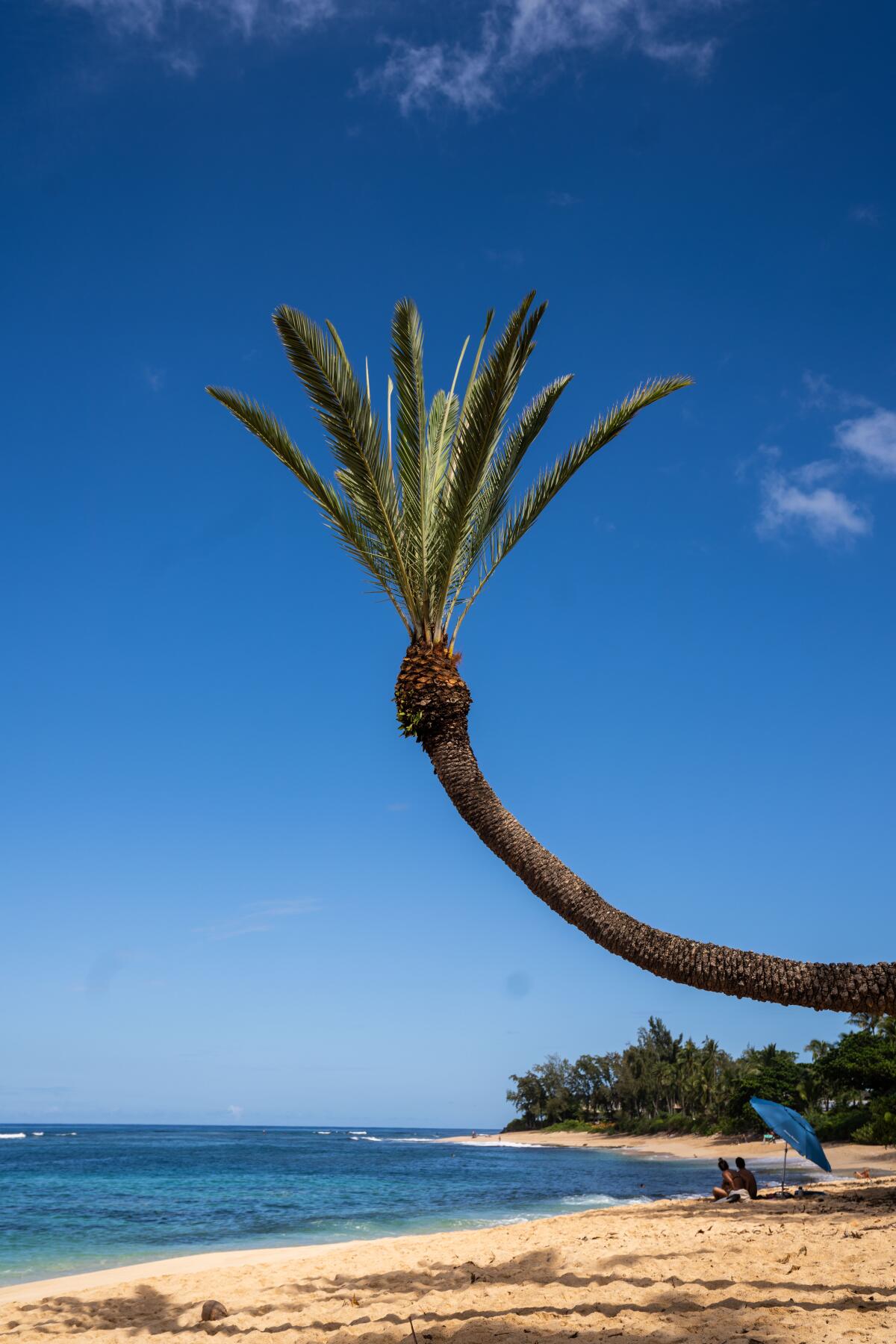
Almost all of Oahu’s beaches and most trails are open, as are hotel pools, with restrictions. Surfboard, bodyboard and paddleboard rentals are open. Since late September, most restaurants and retailers are operating at 50% capacity. Most gatherings are limited to five people; bars and nightclubs are closed.
I’ve made half a dozen visits to Hawaii over the last 20 years, and I never imagined I would spend hours searching Oahu for tourists and find so few.
“The streets are so empty. Have you ever seen a college town in summer?” said Matthew Aguilar, who had come from San Francisco.
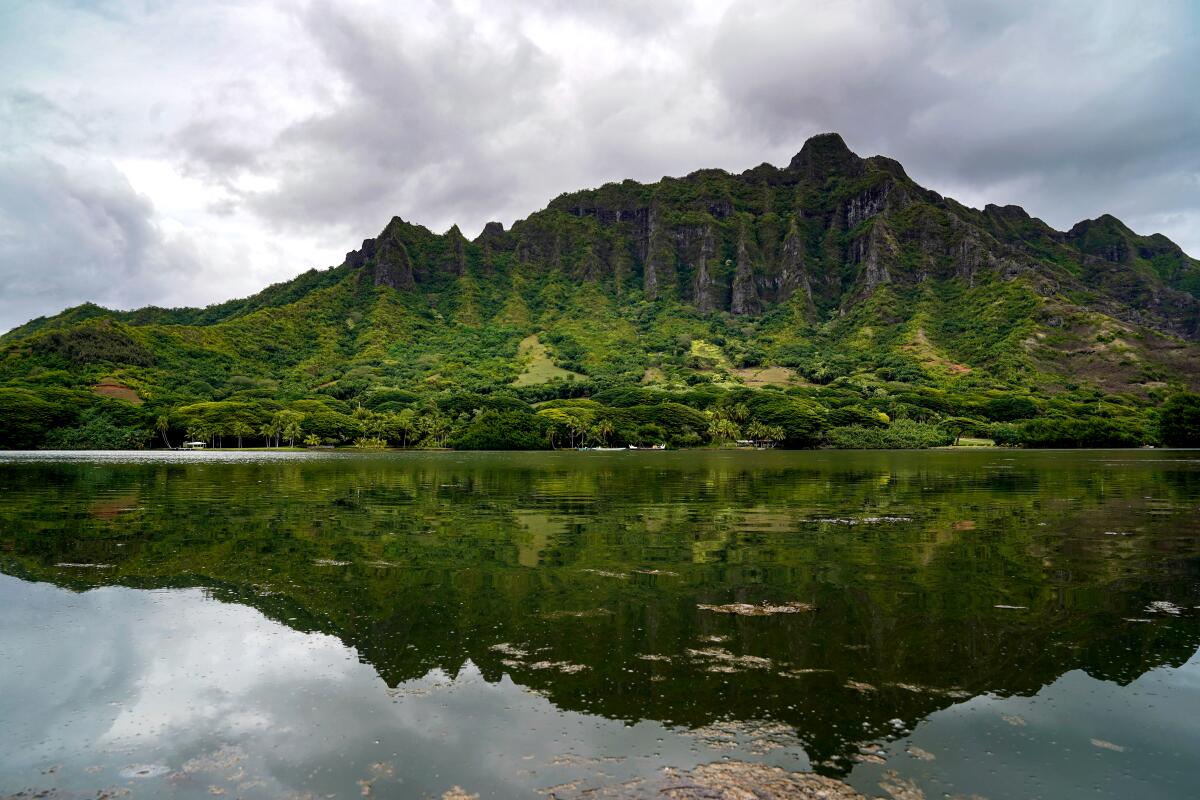
Every morning, I carried my brown-bag breakfast (the only kind many hotels offer at the moment) to the Waikiki Wall and watched locals swimming, bodyboarding, surfing or hanging out on the mostly empty sand.
Most afternoons I found my way to beaches elsewhere on the island, including the calm waters of Kailua Beach Park, where Popoia Island reposes offshore like a crocodile waiting to snap.
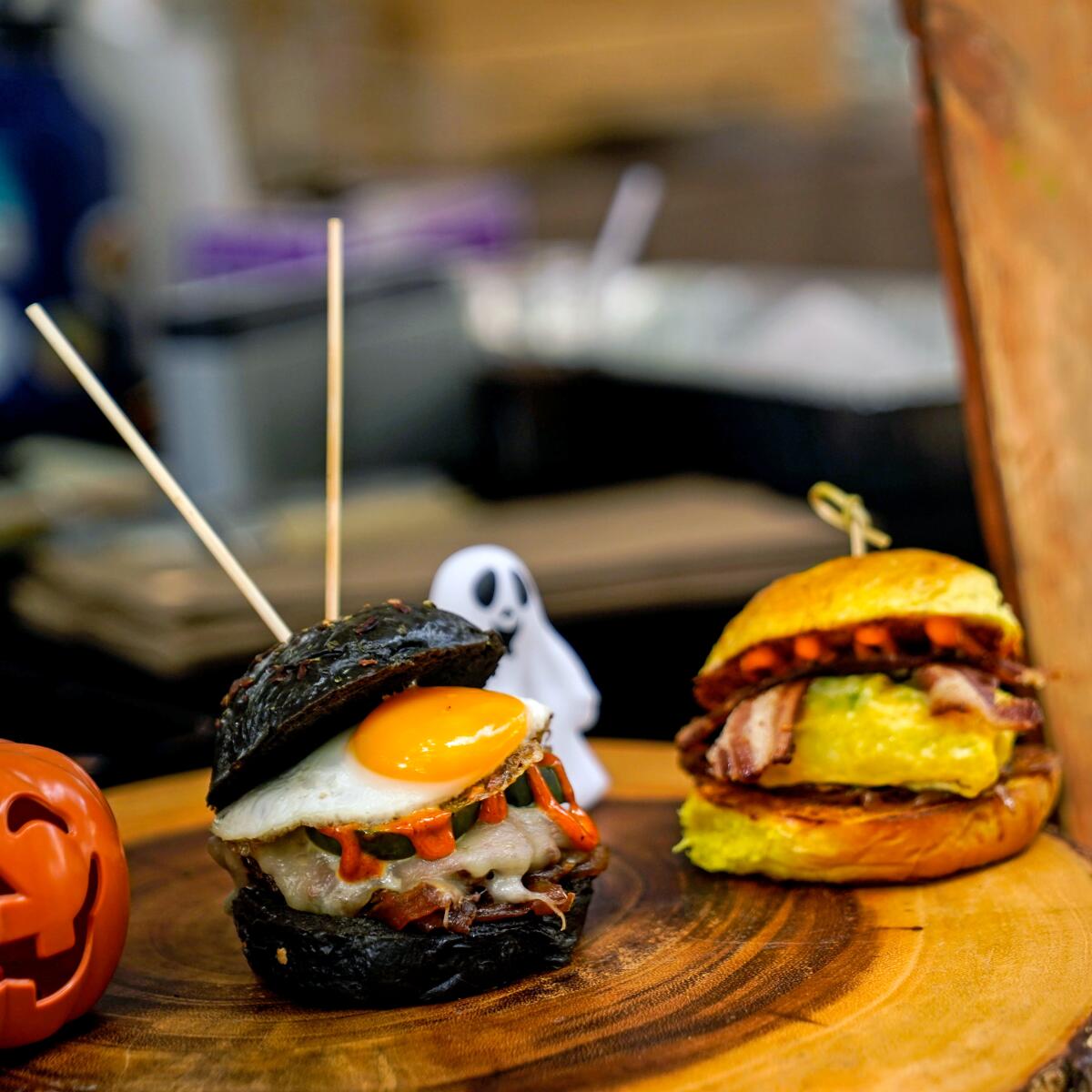
In the lobby of the Hyatt Place Waikiki Beach hotel, desk clerks welcomed guests with free coffee. But there was no place to sit: All the chairs and couches were behind crime scene tape so people could not linger.
When I arrived for lunch at the indoor-outdoor Haleiwa Beach House on the North Shore, I found servers eager to seat me. But before anyone can order, you must share your contact-tracing details, a state requirement for all indoor dining rooms.
At the Waiahole Poi Factory in Kaneohe, I queued up with a dozen other customers to order slow-cooked pork, stewed squid and hand-pounded poi to go. The roadside eatery looked like an ideal place to slip into Hawaiian time and talk story with a local or two.
But not now. A hand-lettered COVID-era sign warned, “No loitering after receiving your food,” so I ate my sack lunch on the hood of my rental car. (I ate my meals outdoors, either on patios or picnic-style.)
How did Hawaii move so fast from island time to “no loitering”?
It might be a matter of bitter experience, said professor Jonathan Kamakawiwoole Osorio, dean of the Hawaiinuiakea School of Hawaiian Knowledge at the University of Hawaii at Manoa.
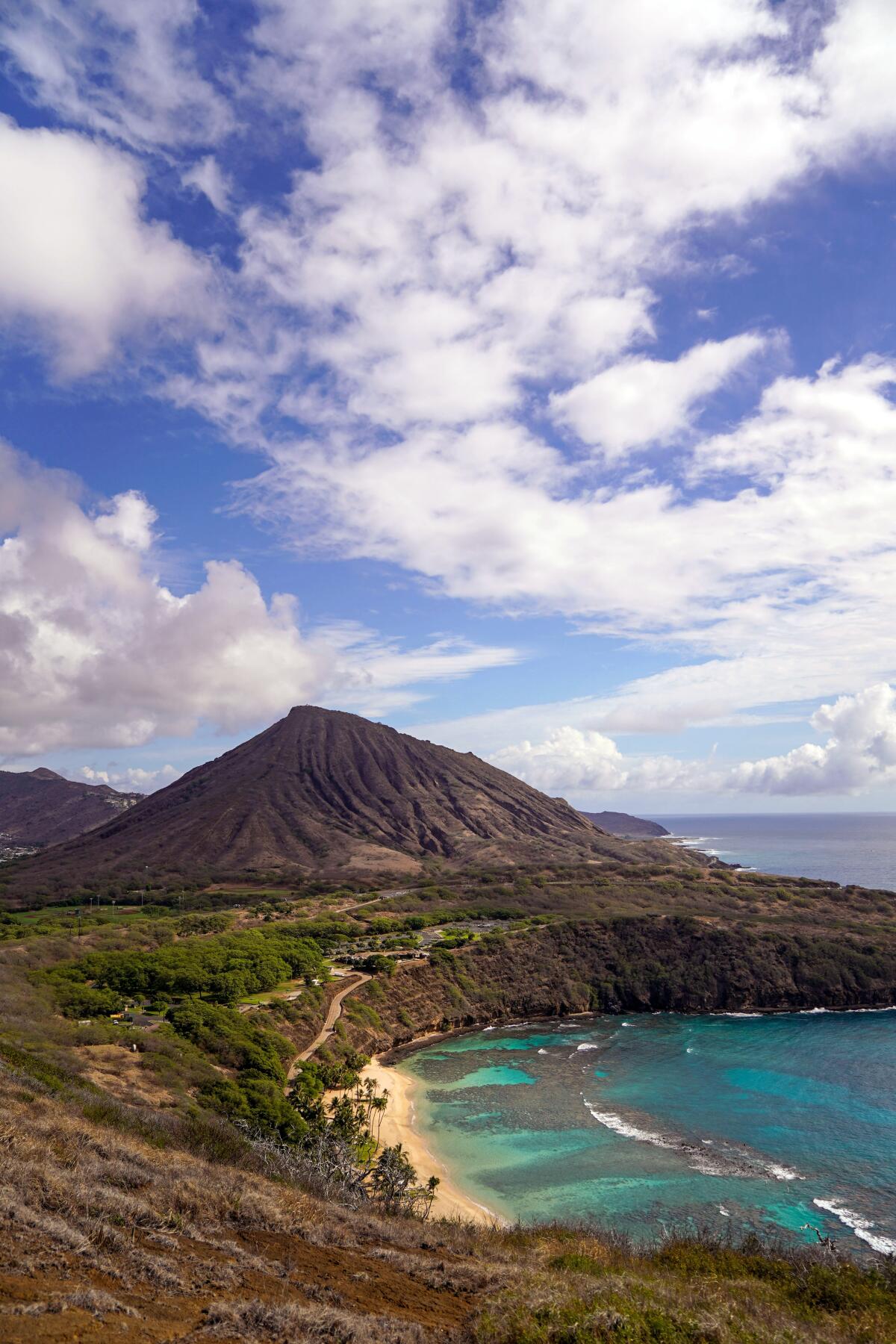
In the century after the first Europeans reached the islands in 1778, islanders endured “practically a century of one epidemic after another killing native people off,” Kamakawiwoole Osorio said. “We went from somewhere between half a million and 800,000 people at the time of contact to fewer than 40,000 people by 1892.” The epidemics included cholera, measles, whooping cough, dysentery and influenza.
“That’s something that’s in Hawaiian minds and understandings. That’s something you really don’t mess around with,” he said.
And now that so many have seen what their home is like without 30,000 arrivals a day, he said, “Do we just run back full speed into that economy and look for as many ways as we can to bring people here? Or did we learn something?”
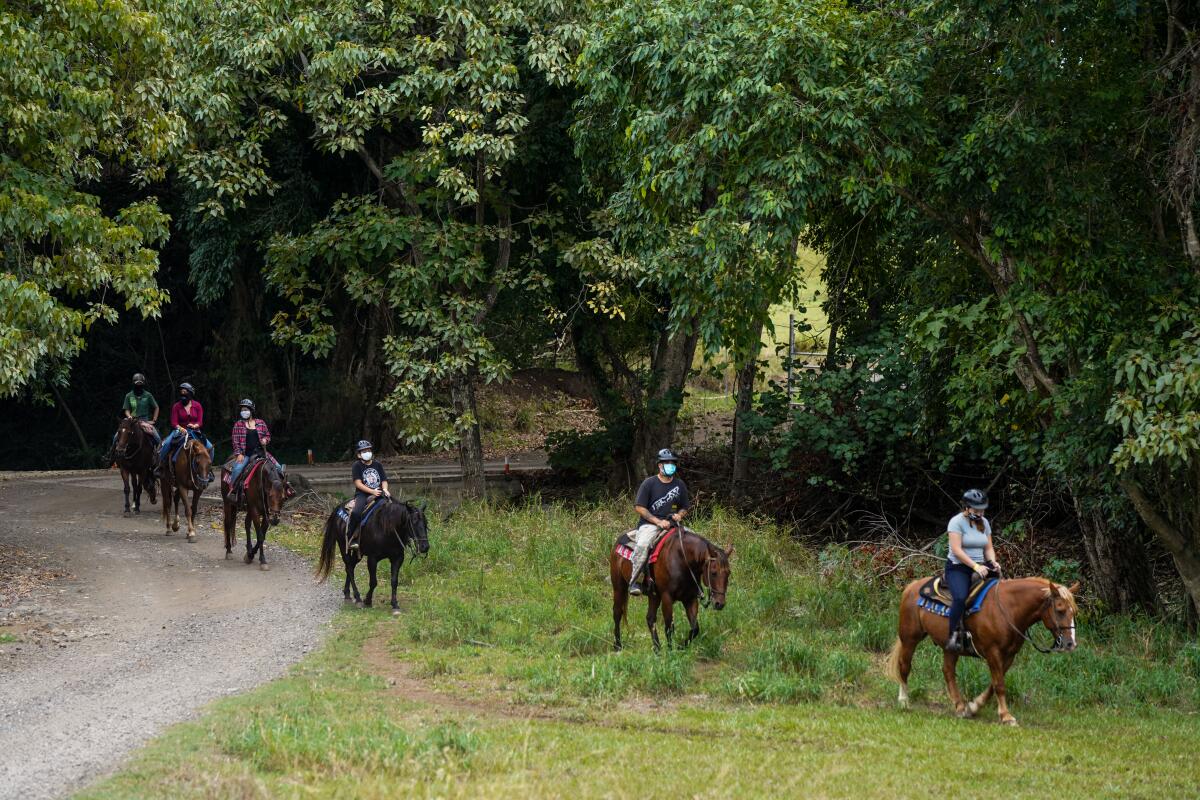
Across Oahu, “everything in nature has blossomed without tourists,” said actress Amy Hill, who relocated to Oahu from Los Angeles to play Kumu on the 2018 reboot of “Magnum P.I.”
“But it’s hard to go down the street and see all these stores boarded up and empty and all these restaurants boarded up,” said Hill. “I think it’s absolutely necessary we open, and I think we’re doing the best we can.”
On the set of “Magnum P.I.,” which resumed shooting in September, “we test Monday, Wednesday, Friday, every week … and nobody’s gotten sick,” said Hill. “We’re wearing masks all the time, until the guy says ‘Action!’ And then when he says ‘Cut!’ the masks come back on.”
Through Oct. 27, the state had recorded 214 COVID-19 deaths. For the seven days ending Oct. 27, Hawaii’s daily rate of new cases was 6.2 per 100,000 residents, according to a tally by the New York Times. California’s rate was 11.4 per 100,000 residents. The overall U.S. rate: 22 per 100,000 residents.
Carmelle Dufresne, a nurse from Georgia, flew in with two friends and said she noticed right away that “people here wear masks. They’re following the rules.”
I noticed the same thing. An ongoing University of Hawaii study has found that 85% of people in public on Oahu are wearing masks properly. (Neighbor islands scored lower, but all were at 62% or above.)
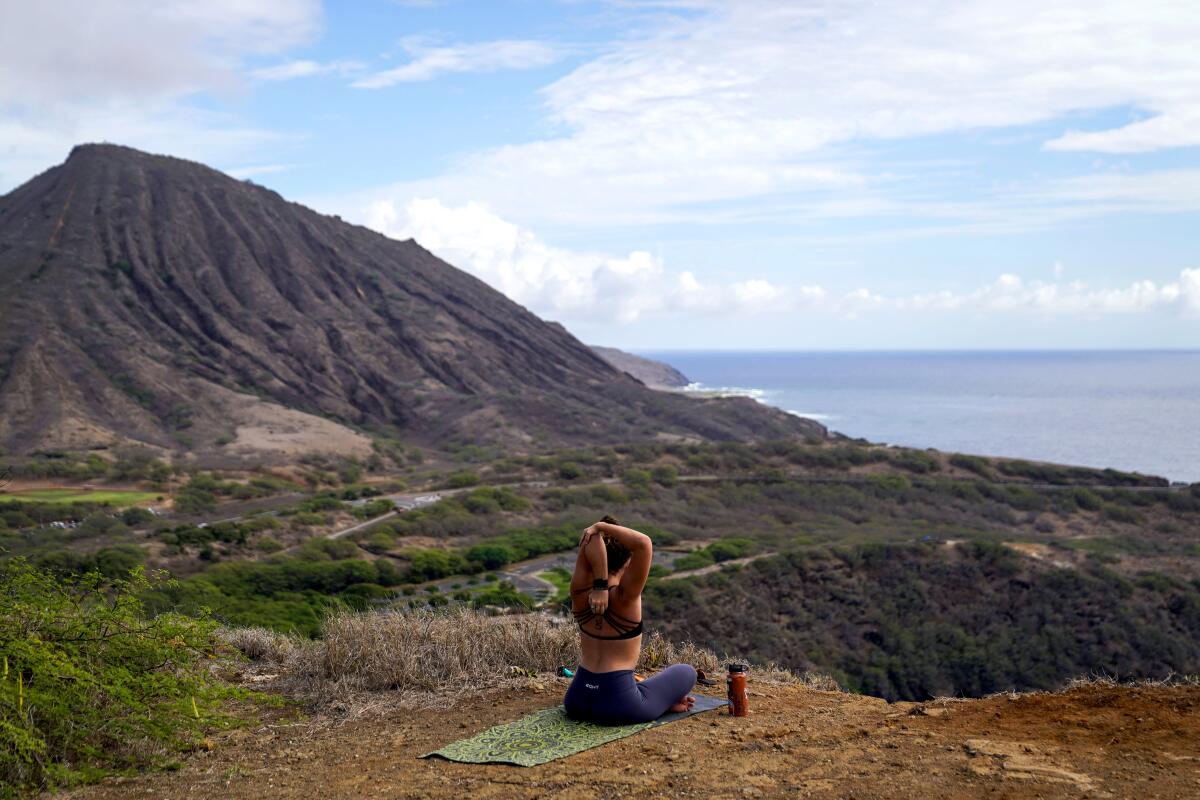
That said, Dufresne and her friends, whom I met outside the Cheesecake Factory in Waikiki, weren’t happy. They were disappointed by the pace of recovery.
“They haven’t opened up everything, like the luaus and the bus tours,” said Sharon Elam, also a nurse from Georgia.
Diamond Head State Monument, the volcanic cone that rises over Waikiki Beach, is closed. So is the Polynesian Cultural Center, known for its village settings and cultural performances. Free torch-lighting and hula performances on Waikiki’s Kuhio Beach, a thrice-weekly tradition for years, are suspended through the end of the year.
State officials have banned all visitors to the Hanauma Bay Nature Preserve, famed as a snorkeling destination. Local hikers step past “No trespassing” signs to walk the ridge trail above the coral-dotted, blue-green bay and marvel at its emptiness.
“I’m happy this is staying closed,” said Linster, who was doing yoga on the ridge. She said her waitress job is getting busier by the day, in part because of returning tourists, in part because of a state program that gave $500 restaurant-only debit cards to thousands of unemployed workers. (The state’s unemployment rate is north of 15%.)
Many attractions and businesses have reopened, including dozens of restaurants. Many have expanded outdoor seating, including Duke’s Waikiki and other tourist spots and Honolulu institutions such as Leonard’s Bakery and the Rainbow Drive-In.
Most of the Pearl Harbor National Memorial, including the USS Arizona Memorial, reopened Sept. 28. The Bishop Museum reopened Sept. 24, as did Iolani Palace, though both of those indoor venues are operating at reduced capacity.
At Kualoa Ranch, a nature reserve, cattle ranch and tourist attraction near Kaneohe, visitors can again ride horses, bikes, ATVs and ziplines beneath the steep, green mountains that appeared in “Jumanji” and “Jurassic Park” films.
In a Hawaii Visitors and Convention Bureau survey, more than 80% of Oahu hotels said they expected to be open by the end of November, with comparable results for neighbor islands.
On Wednesday, leaders of Honolulu County (which covers all of Oahu) moved the island from Tier 1 to Tier 2 in their recovery plan. Among other things, that means short-term property rentals are permitted and members of different households can dine together in restaurants as long as the group is no larger than five.
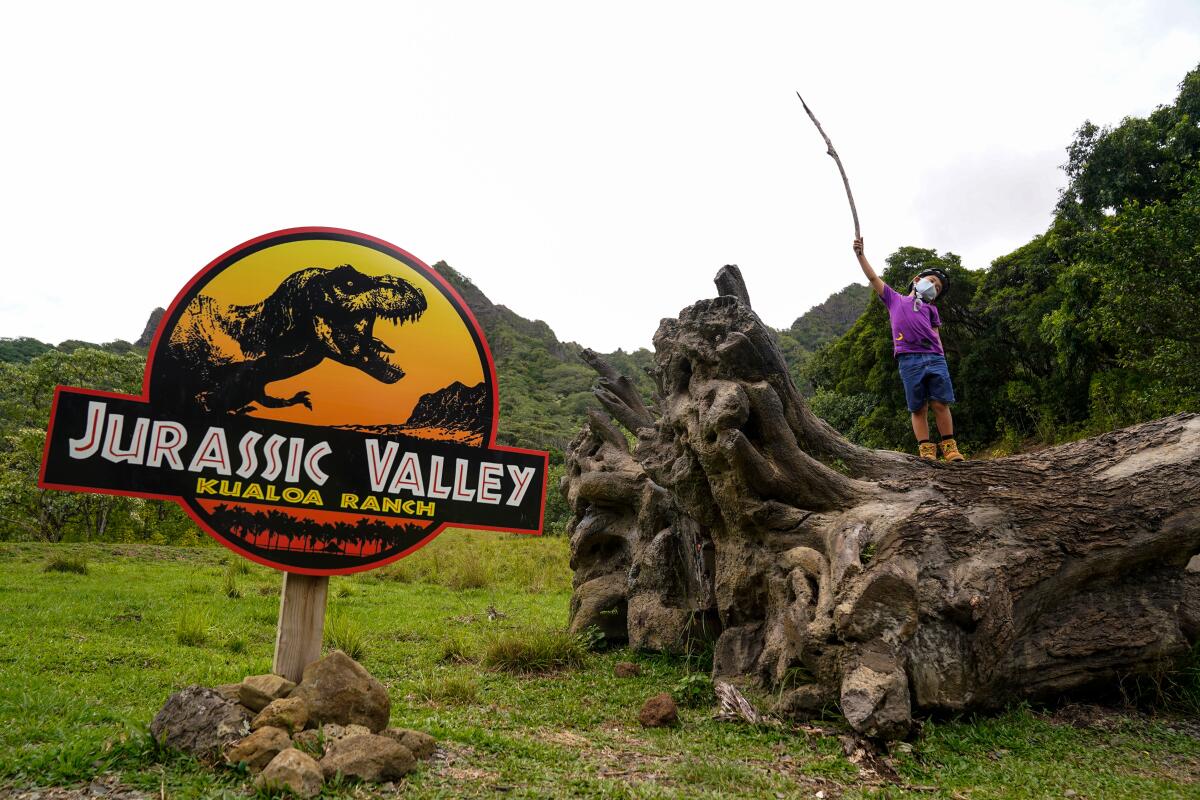
Last year at this time, business as usual meant roughly 30,000 passengers per day arriving in Hawaii’s airports. The pandemic drove down that number to fewer than 2,000, sending the tourism industry into a nosedive.
With the Oct. 15 reopening, the number of daily arrivals has jumped as high as 7,719.
Hawaiian Airlines in December will resume daily nonstop service between Honolulu and Long Beach Airport and also nonstop flights between Kauai and Los Angeles and Oakland, and between Maui and San Diego and San Francisco.
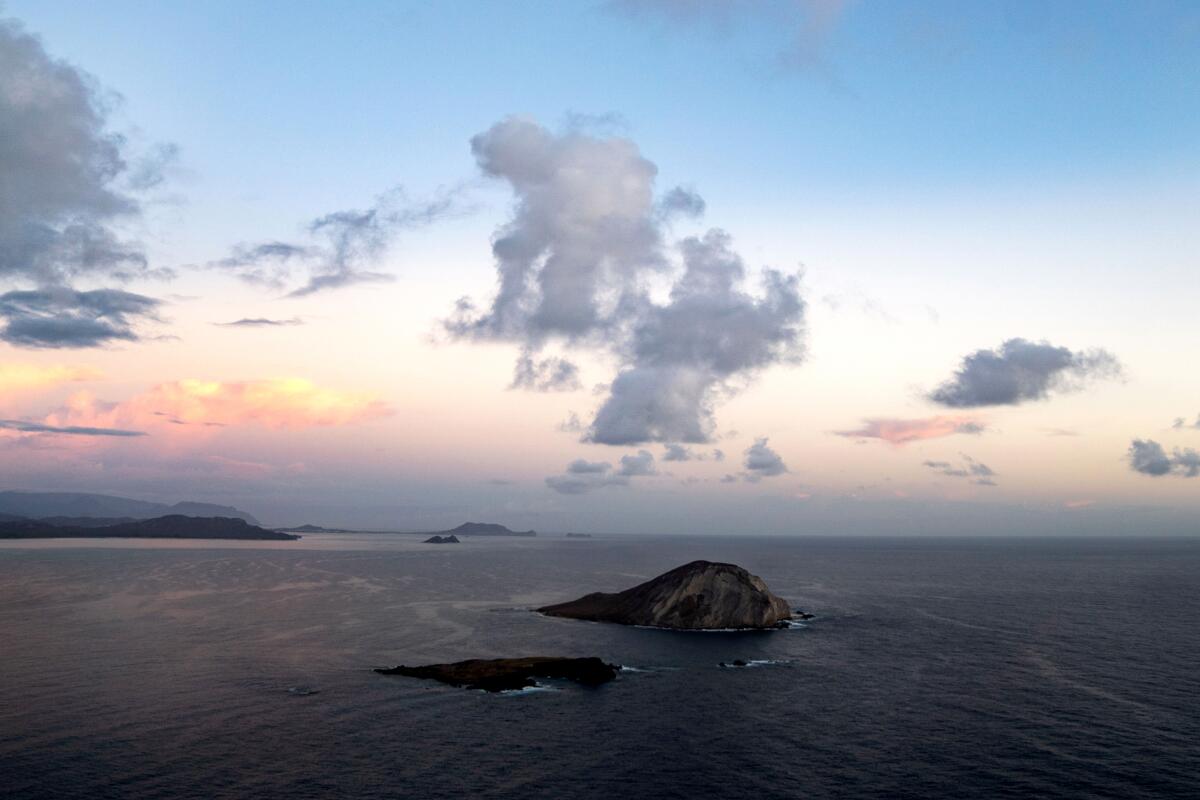
Although tourism leaders and travelers are celebrating the reopening of the islands, many islanders have mixed feelings.
I ran into Kimo Kimokeo on the uncrowded beach at Haleiwa. The furloughed Hawaiian Airlines worker said that within a few weeks, “it’s going to be way more crowded than it is now. And the shops will make more money because the tourists will go there. But with COVID, who knows?
“It’s good they’re going back to work but dangerous that the virus isn’t quite finished yet. You look at it, life is more important than money.”
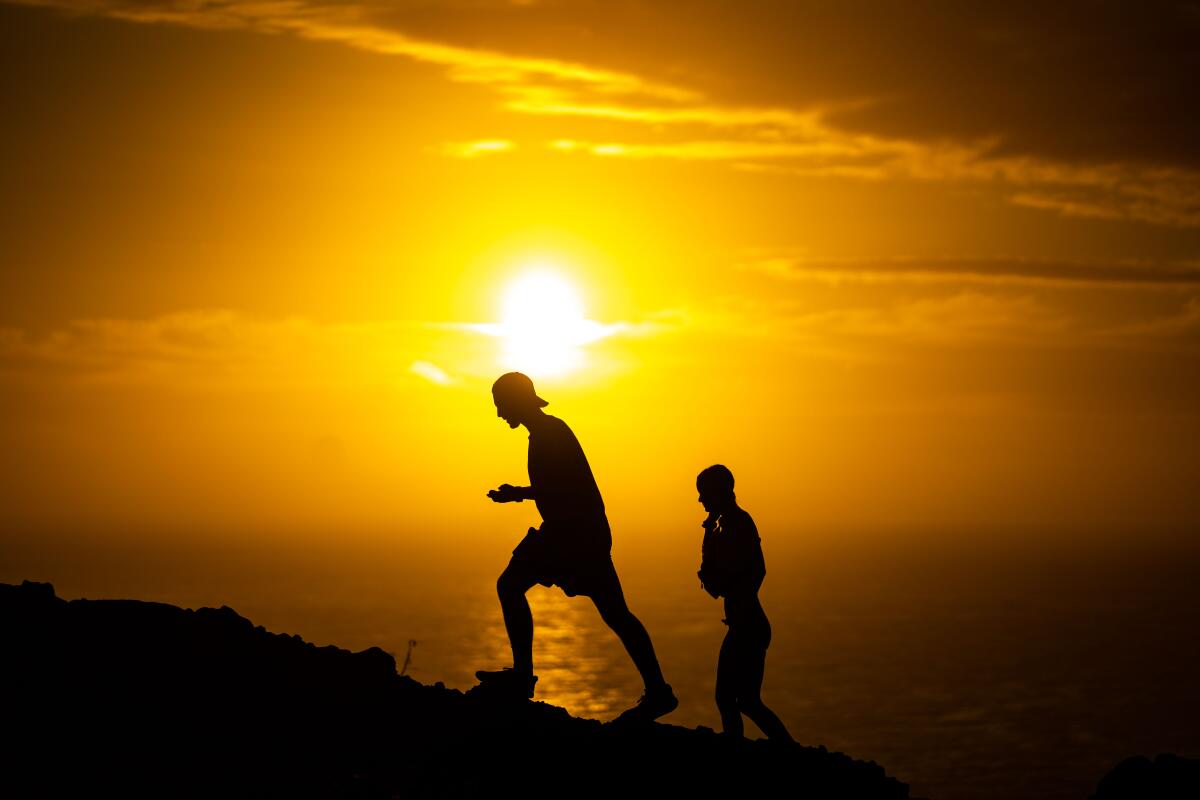
If you’re considering a trip to Hawaii, bear in mind that local, state and federal health officials continue to say that the closer Americans stay to home, the safer they and others will be.
Rules and recommendations vary among Hawaii’s islands. To avoid a 14-day quarantine, the state requires a negative COVID-19 test from an approved lab, conducted within 72 hours of your trans-Pacific flight.
As of late October, arriving interisland and trans-Pacific passengers on Hawaii Island are required to pass a second COVID-19 test (free) to avoid quarantine. Maui officials are asking visitors to voluntarily take a post-arrival test (free) and a local outbreak has led officials to limit travel to Lanai to essential workers and medical purposes. Kauai is also recommending a second COVID-19 test (at a cost of $150) and offering $150 gift cards as inducement.
Sign up for The Wild
We’ll help you find the best places to hike, bike and run, as well as the perfect silent spots for meditation and yoga.
You may occasionally receive promotional content from the Los Angeles Times.